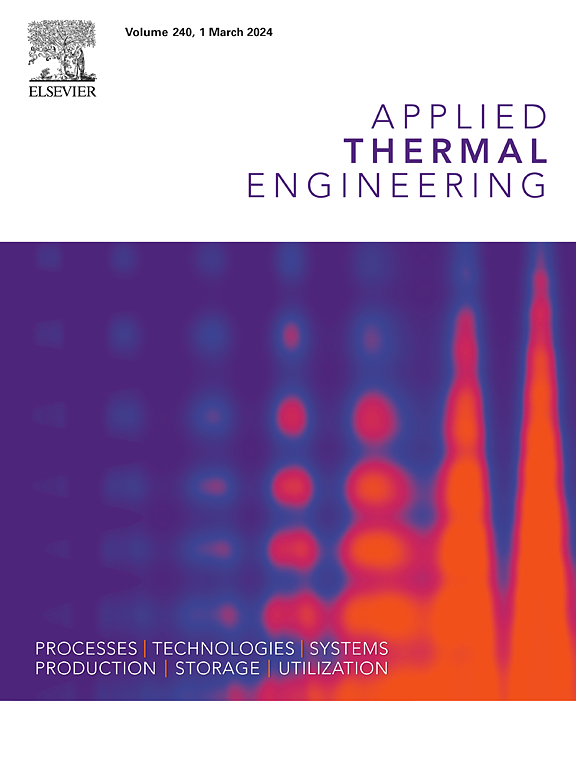Experimental study on natural convection heat transfer performance of microencapsulated phase change material slurry in a square cavity
IF 6.1
2区 工程技术
Q2 ENERGY & FUELS
引用次数: 0
Abstract
Microencapsulated phase change slurry (MicroEPCMS), consisting of microencapsulated phase change material (MicroEPCM) and base liquid, represents a novel latent heat functional fluid that can absorb a large amount of heat within its phase change temperature range. It has found widespread use as a functional liquid cooling medium for heat dissipation in batteries, electronic devices, and other devices. In this work, MicroEPCMS with different MicroEPCM concentration were prepared. The physical properties of MicroEPCMS including density, thermal conductivity, and dynamic viscosity were tested within different temperature ranges. The results showed that the MicroEPCMS exhibits a superior thermal energy storage capacity compared to water. In the phase change range of MicroEPCM, the MicroEPCMS has a higher thermal conductivity compared to water. In addition, the natural convection heat transfer characteristics of MicroEPCMS in a square cavity were investigated under varying heating power. The results indicated that MicroEPCMS can enhance natural convection heat transfer by absorbing heat with a minimal temperature rise during the phase change process compared to water. Moreover, higher heating power enables natural convection enhancement of MicroEPCMS in a square cavity. These results underscore the significant potential of MicroEPCMS as a functional liquid cooling medium for applications in thermal energy storage and thermal management.
方形空腔中微胶囊相变材料浆料自然对流传热性能的实验研究
微胶囊相变浆料(MicroEPCMS)由微胶囊相变材料(MicroEPCM)和基液组成,是一种新型潜热功能流体,可在相变温度范围内吸收大量热量。它已被广泛用作功能液体冷却介质,用于电池、电子设备和其他设备的散热。本研究制备了不同浓度的 MicroEPCMS。在不同温度范围内测试了 MicroEPCMS 的物理性质,包括密度、热导率和动态粘度。结果表明,与水相比,MicroEPCMS 具有更出色的热能储存能力。在 MicroEPCM 的相变范围内,与水相比,MicroEPCMS 具有更高的热导率。此外,还研究了 MicroEPCMS 在方形空腔中不同加热功率下的自然对流传热特性。结果表明,与水相比,MicroEPCMS 可在相变过程中以最小的温升吸收热量,从而增强自然对流传热。此外,较高的加热功率也能增强 MicroEPCMS 在方形空腔中的自然对流。这些结果凸显了 MicroEPCMS 作为功能性液体冷却介质在热能存储和热管理应用中的巨大潜力。
本文章由计算机程序翻译,如有差异,请以英文原文为准。
求助全文
约1分钟内获得全文
求助全文
来源期刊

Applied Thermal Engineering
工程技术-工程:机械
CiteScore
11.30
自引率
15.60%
发文量
1474
审稿时长
57 days
期刊介绍:
Applied Thermal Engineering disseminates novel research related to the design, development and demonstration of components, devices, equipment, technologies and systems involving thermal processes for the production, storage, utilization and conservation of energy, with a focus on engineering application.
The journal publishes high-quality and high-impact Original Research Articles, Review Articles, Short Communications and Letters to the Editor on cutting-edge innovations in research, and recent advances or issues of interest to the thermal engineering community.
 求助内容:
求助内容: 应助结果提醒方式:
应助结果提醒方式:


